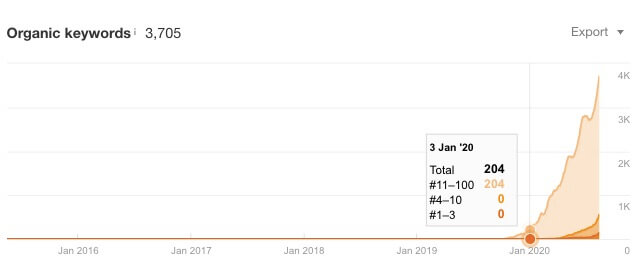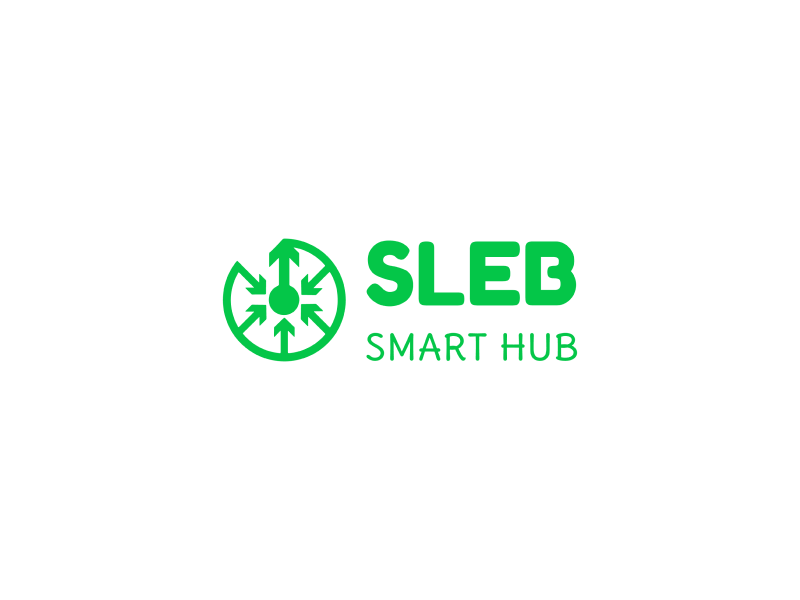Unopening is a website we manage that shortlists and reviews the best options for popular products and services in Singapore. That way, consumers can save time researching product and service options out there.
Read on to know what exactly we did to grow Unopening to what it is today!
What Unopening has achieved so far
All within 8 months, Unopening’s organic traffic grew by a 100 times, from 100 to 10,000 visits a month (Jan – Aug 2020).
Organic keywords grew from 200 to almost 4,000 in this same period. Unopening also has about 500 keywords ranking on the first page of Google’s search results.
These were our most popular articles in terms of search traffic:
- 14 Best Gaming Chairs in Singapore From $125 (2020)
- 7 Best Bladeless Ceiling Fans in Singapore Starting From $120 (2020)
- 10 Best Toilet Bowl Brands in Singapore to Consider for Your Home (2020)
While Unopening has some content covering the best food, entertainment, and lifestyle options, the site’s best performing articles have been on home products.
How we achieved these results
Achieving these traffic results required us to consistently experiment with, optimise, and refine the content.
Here’s a closer look at our approach.
Consistent publishing
Google favours websites that regularly publish fresh content. Whether it was 1 article or 4 articles, we always made it a point to publish new content on Unopening every week.
All this was made easier by…
Using an article and SEO template
Unopening is a simple listicle site for products and services. And when you’re consistently putting out 10 – 20 listicles a week, creating an article and SEO template isn’t too difficult.
More importantly, it helps us to scale up production more easily without sacrificing quality.
These templates are a continuous work-in-progress. We’re constantly experimenting with content elements that may be more SEO-friendly or helpful for users.
Carefully researched topics
There are tons of products and services out there on the market. However, some are much more popular than others when it comes to search volume.
We focus on product and service search keywords with significant volumes, narrowing down to those with little competition.
SEO data aside, part of our research involves discovering popular and trending products consumers are buying online, and if there’s a user need we can fill by creating listicles on these products.
Crafting content flow and titles that mirror user needs
Titles
We’ve always been clear about our target audience: people looking to purchase a product or service, and trying to narrow down to the best option. This shows up in our keyword research, where “best” is always included next to a certain product or service keyword.
To mirror this user aspiration, the word “best” is always featured in our article titles and as part of our overall keyword strategy.
But consumers don’t just want the best, they also want it cheap! This is why most of our article titles include the price of the cheapest product.
Where possible, we also try to feature more affordable products. That way, consumers don’t miss out on them and we can play a part in helping them save money.
Content flow
Click into any Unopening article, and you’ll also notice it always begins with useful pointers about what a buyer should consider first.
A typical household product has lots of features, some useful, some not so useful. By sharing these useful pointers, we get to add more value to readers. As a bonus, doing so helps SEO.
Next, the products in our listicles are always arranged from the cheapest to the most expensive. That way, consumers can get a better sense of the price spectrum for a particular product.
They also get to easily compare how a certain product differs with a slightly cheaper one they just saw, and to judge whether the price difference is justified.
Lastly, every product listicle ends by covering the best places to buy the product. This opens up more options for readers to explore other product options. The places we provide are usually brick and mortar stores, so readers will know where to go should they wish to physically see and try the products.
Continuous optimisation
There are articles that do really well on a consistent basis, far surpassing our expectations. On the other hand, some do very poorly, even after many months go by. And there are those that lie somewhere in the middle, needing a little push to reach the top.
On a weekly basis, we single out 1 or 2 articles to improve on—usually the underperforming ones. Improvements could include optimising the title, improving readability, or enhancing existing information.
How we’ve maintained our Google rankings and traffic growth
The world of online search is a dynamic and ever-evolving playing field, with Google adjusting their SERPs every week.
We often see a large spike in Unopening search traffic on weekends, with it dropping to usual levels on weekdays. Even on weekdays, traffic numbers can see-saw up and down.
We’ve learnt not to be distracted with short-term ups and downs, and to focus on steady and long-term growth, which we’re happy to have achieved till date.
Broadly, this is how we’ve managed to maintain our rankings and traffic:
- Regularly updating and enhancing articles
- Focusing on producing articles in the home and office niche
- Publishing new content consistently—at least 1 article a week.
What we’ve learnt
Growing Unopening to what it is today has been highly fulfilling, and so are the lessons we’ve picked up along the way.
Here are the key lessons we’ve learnt so far:
Focus on a niche
When we first launched Unopening, we were writing about almost every product and service under the sun, from party supplies to dim sum buffets.
Over time, we found that our home and office content were doing much better. That’s when we decided to zero in on this domain to maximise results, instead of spreading ourselves too thin.
Optimise, and optimise some more
We’ve seen first hand how improving existing content has positively impacted our traffic. Even our top-performing content won’t remain where they are for long if we don’t constantly improve them.
After all, Google’s job is to provide the best content for users. If your content remains stagnant, something better could come along tomorrow and push you off the top spot.
Create thick content
Each of our articles are at least 1,300 words long, with most of them far exceeding this number. This is because we’ve found through experience that longer content tends to perform better in general.
The reader is king, and content should always serve them
Related to the earlier point, longer content doesn’t mean writing fluff. Each listicle needs to be created with the readers in mind, and are crafted to help them as much as possible in their purchasing journey.










